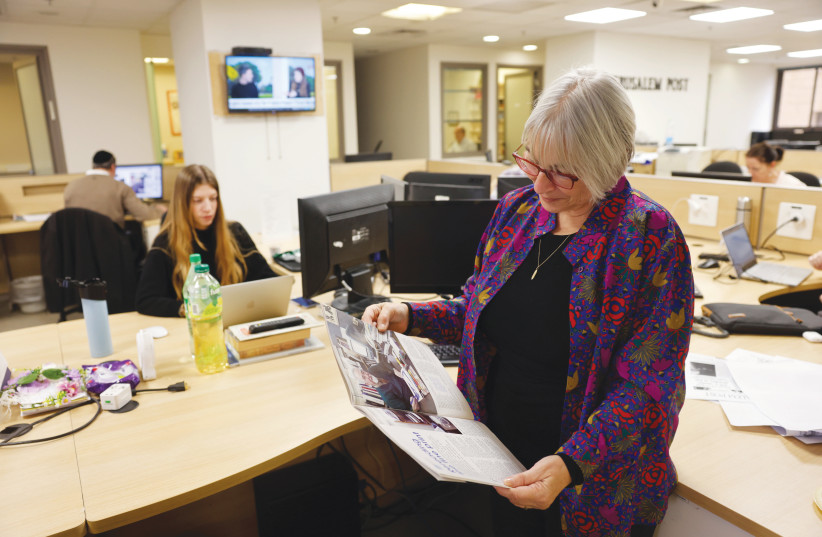A quiet office can be bad for employee mental health - study

Why do people like to concentrate and work in coffee shops? Noise. The key to healthier employees could be a quieter – or louder – office space.
Complete silence in the office is not conducive to good health. Surprisingly, choosing to work in the murmur of a busy coffee shop rather than in an office with library-level silence might be healthier, according to a new study by researchers at the University of Arizona and the University of Kansas.
While loud noises at the office have a negative impact on employee well-being, complete silence is also not conducive to a healthy workplace. The researchers found that the ideal amount of noise is at about 50 decibels – roughly equivalent to the pitter-patter of moderate rain on the roof or to birdsong.
“Everybody knows that loud noise is stressful, and, in fact, extremely loud noise is harmful to your ear,” said study co-author and physician Prof. Esther Sternberg, director of the University of Arizona Institute on Place, Wellbeing and Performance in Tucson. “But what was new about this is that with even low levels of sound – less than 50 decibels – the stress response is higher.”
Offices shouldn't be too loud – or too quiet
The study – part of a larger workplace well-being research project led by Sternberg – suggests that if employers intend to build or redesign their office spaces with employee health and well-being in mind, they might want to consult acoustical engineers who can help them dial in conditions for good environmental sound, said Sternberg, who is also director of research at her university’s Weil Center for Integrative Medicine.
The study, entitled “Discovery of associative patterns between workplace sound level and physiological wellbeing using wearable devices and empirical Bayes modeling,” was published earlier this month in the journal Nature Digital Medicine. Management information systems Prof. Sudha Ram was the study’s senior author, while assistant Prof. Karthik Srinivasan at the University of Kansas, led the research when he was a doctoral student in Tucson and is the paper's lead author.
Srinivasan noted that “when we think about well-being, typically we think about emotional or mental well-being. We hardly ever consider the physiological well-being or the actual ‘what's happening in our body,’ which is also important to understand when we're continuously exposed to environmental factors such as sound.”
In a study that Sternberg she led in 2018, she showed employees who worked in open office seating – at desks that aren’t separated by partitions – had greater daytime activity levels and lower stress levels in the evening, after work hours, compared to workers in private offices and cubicles. But open office spaces also come with a common complaint from people who work in them: noise. With this latest study, Sternberg and her co-authors shed more light on employees' physiological reactions to office sound.
The new study was part of Sternberg’s larger research project – called Wellbuilt for Wellbeing – in partnership with the US General Services Administration, the federal agency that oversees basic operations for all nonmilitary federal government buildings, including building and buying real estate, managing buildings’ operating systems and managing government-wide reentry into the workplace amid the COVID-19 pandemic.
To measure the impact of sound on office workers, researchers asked 231 of the agency's employees working in four buildings across the US to wear two devices for three days. One device, worn around the neck, measured sound levels in the person's work environment. Another, worn on the chest, measured participants' physiological stress and relaxation levels, using heart rate variability, or the varying lengths of time between each heartbeat.
Heart-rate variability is a direct result of breathing, Sternberg said: As a person inhales, his or her heart rate slightly increases, and it decreases as the person exhales, causing variability between heartbeats. The more variable the space between heartbeats, the healthier the person is.
The results showed that when a worker’s environmental sound level was above 50 decibels, each 10-decibel increase was related to a 1.9% decrease in physiological well-being. But when office sound was lower than 50 decibels, each 10-decibel increase related to a 5.4% increase in physiological well-being.
Humans' tendency to get distracted, Sternberg said, is a result of the brain's stress response to potential threats. Our brains are "difference detectors" that take note of sudden changes in sounds so we can decide to fight or flee, she said. That may explain why low, steady sounds help mask distractions in the workplace, she added.
Sternberg suggested that “people are always working in coffee shops – those are not quiet spaces. But the reason you can concentrate there is because the sounds all merge to become background noise. It masks sound that might be distracting. If you hear a pin drop when it’s very, very quiet, it will distract you from what you’re doing. If employee health is a priority,” she concluded, “there’s no reason why these simple interventions can’t be installed in office spaces to mitigate sound distraction.”
Jerusalem Post Store
`; document.getElementById("linkPremium").innerHTML = cont; var divWithLink = document.getElementById("premium-link"); if (divWithLink !== null && divWithLink !== 'undefined') { divWithLink.style.border = "solid 1px #cb0f3e"; divWithLink.style.textAlign = "center"; divWithLink.style.marginBottom = "15px"; divWithLink.style.marginTop = "15px"; divWithLink.style.width = "100%"; divWithLink.style.backgroundColor = "#122952"; divWithLink.style.color = "#ffffff"; divWithLink.style.lineHeight = "1.5"; } } (function (v, i) { });

